Our 1nm bandpass filters, are centred at wavelengths of 1056nm and 1063nm, fitting between the intense OH sky lines at these wavelengths. To detect evidence of star formation in the early universe we are looking for Lyman-alpha emission (rest wavelength 121.5nm) redshifted to the wavelength of our filters at a redshift of 7.7. To identify an object as an emission line source, it has to appear in one filter and not the other. Of course, not every object we discover in this way will be a Lyman-alpha emitter - it is possible we are detecting an object at lower redshift which just happens to have a redshifted emission line (for example the forbidden line [OIII]500.7nm at a redshift of 1.12, or H-alpha 656.3nm at a redshift of 0.62) which coincides with the passband of one of our filters. We can identify these low redshift detections - our selection of the GOODS field (Great Observatories Origins Deep Survey field) for the first run was because excellent photometry in this field already exists. We estimate that we will find between 0 and 4 Lyman-alpha emitters at redshift 7.7 and ten times as many low redshift interlopers in our observations.
On our first science run at the VLT on the nights 2 to 10th November 2006, we successfully obtained 69 hours of data on the GOODS field with two deep survey pointings of approximately 10 hours per filter during good seeing (~0.4 arcsecond), and six shallow survey pointings of 2.5 hours per filter during times of worse seeing (0.8-1.3 arcseconds).
Below are examples of our detections, firstly a low redshift interloper, and secondly, a redshift 7.7 candidate.
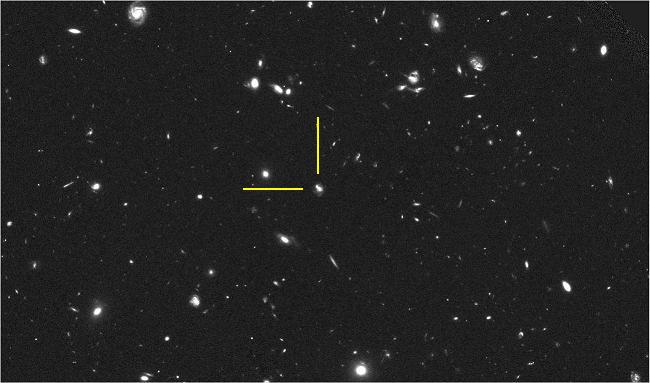
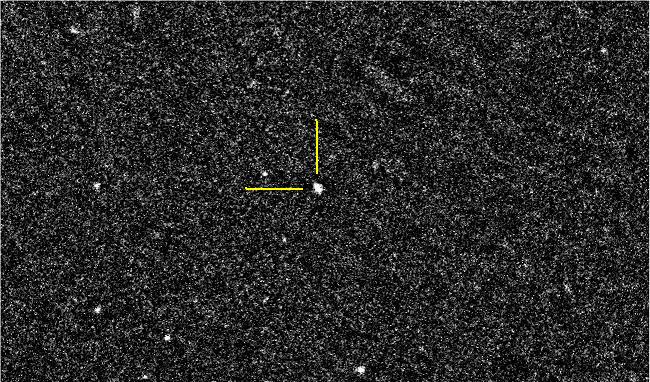
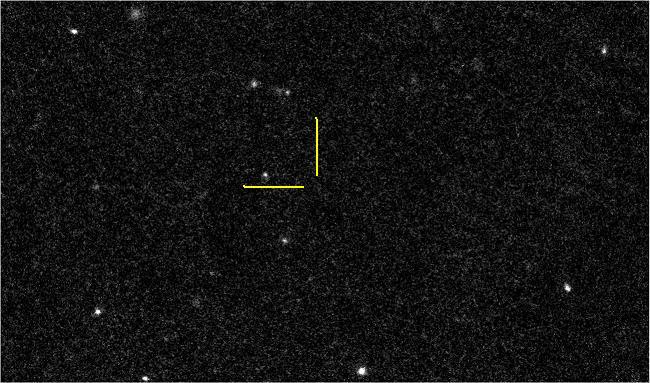
How do we know this is not a Lyman-alpha detection? There should be no light from the object at wavelengths below the Lyman-alpha wavelength. As this object is detected in the GOODS survey in the Z-band, then our detection at 1063nm is likely to be an [OIII] line, for example.
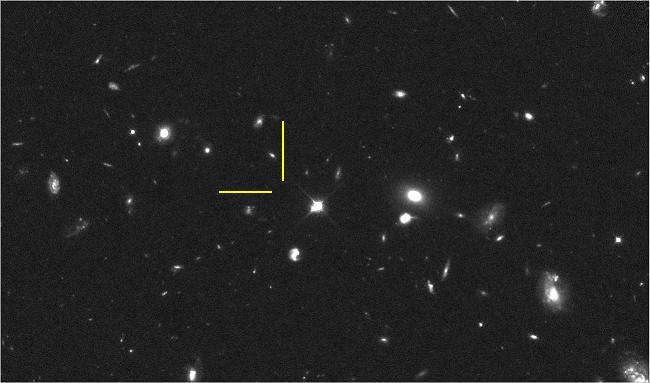
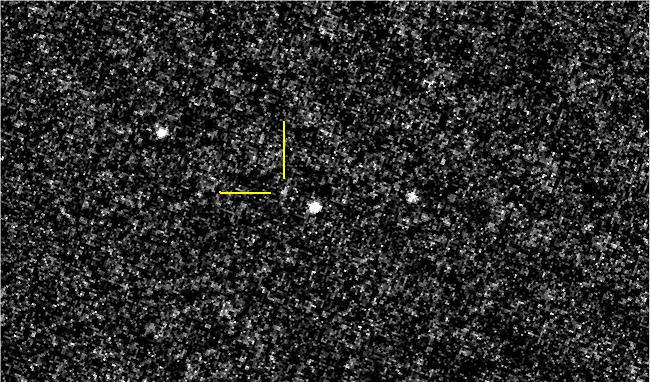
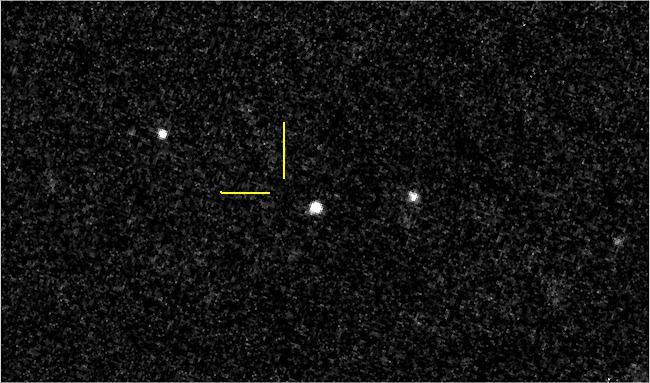
Here there is no source in the Hubble Deep Field Z band image, or the 1056nm filter corresponding to the position of our detection through the 1063nm filter. This object is thus a candidate Lyman-alpha emitter at a redshift of 7.7